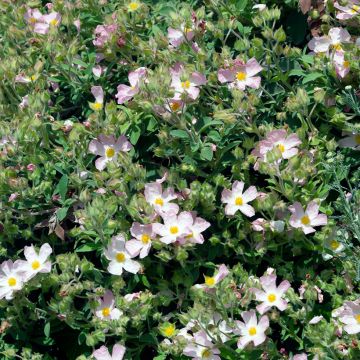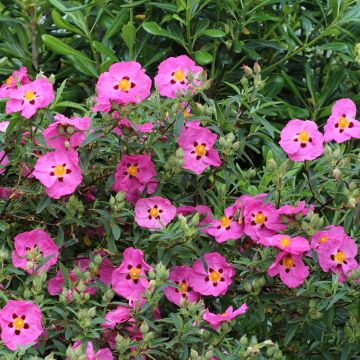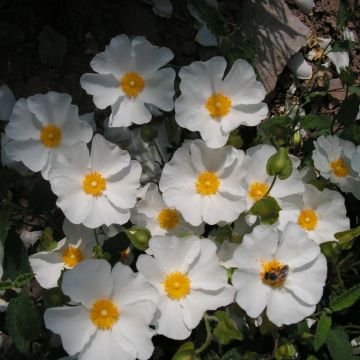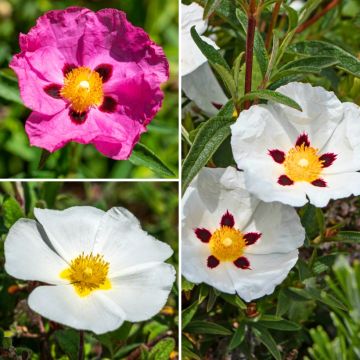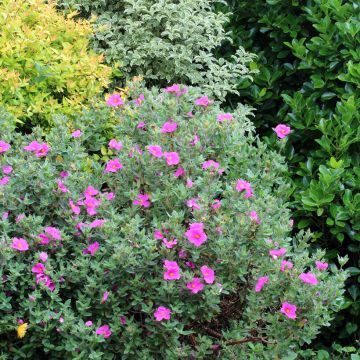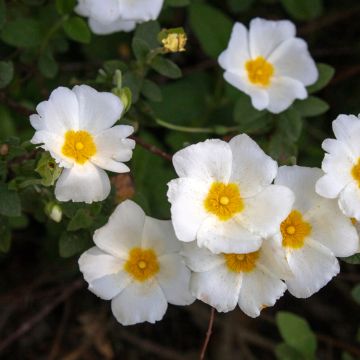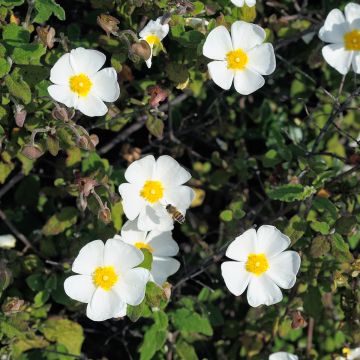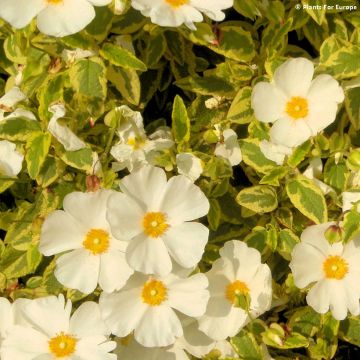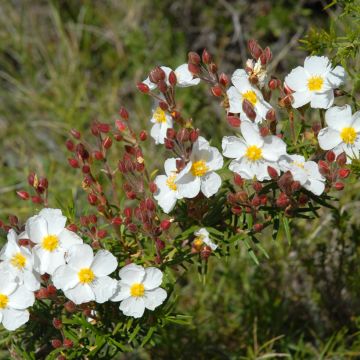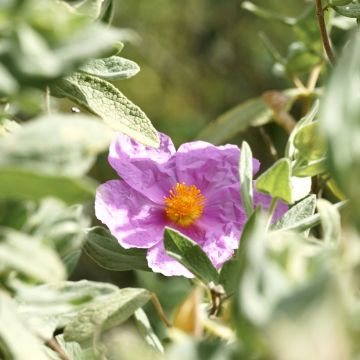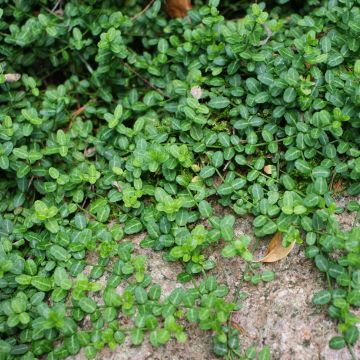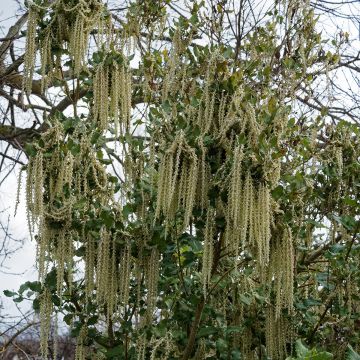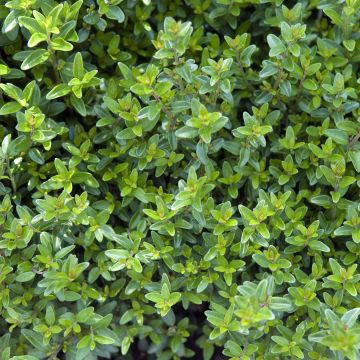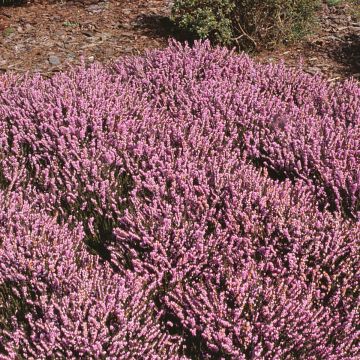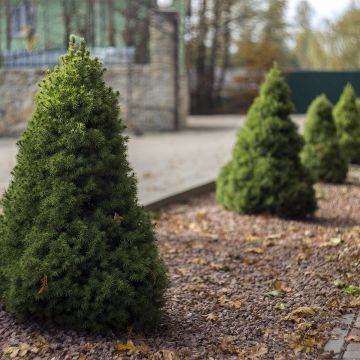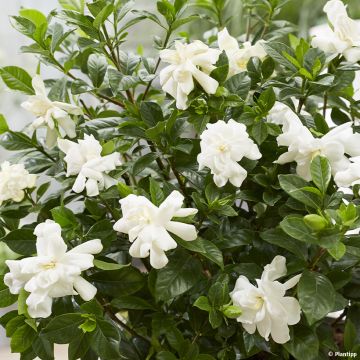

Cistus creticus - Rockrose
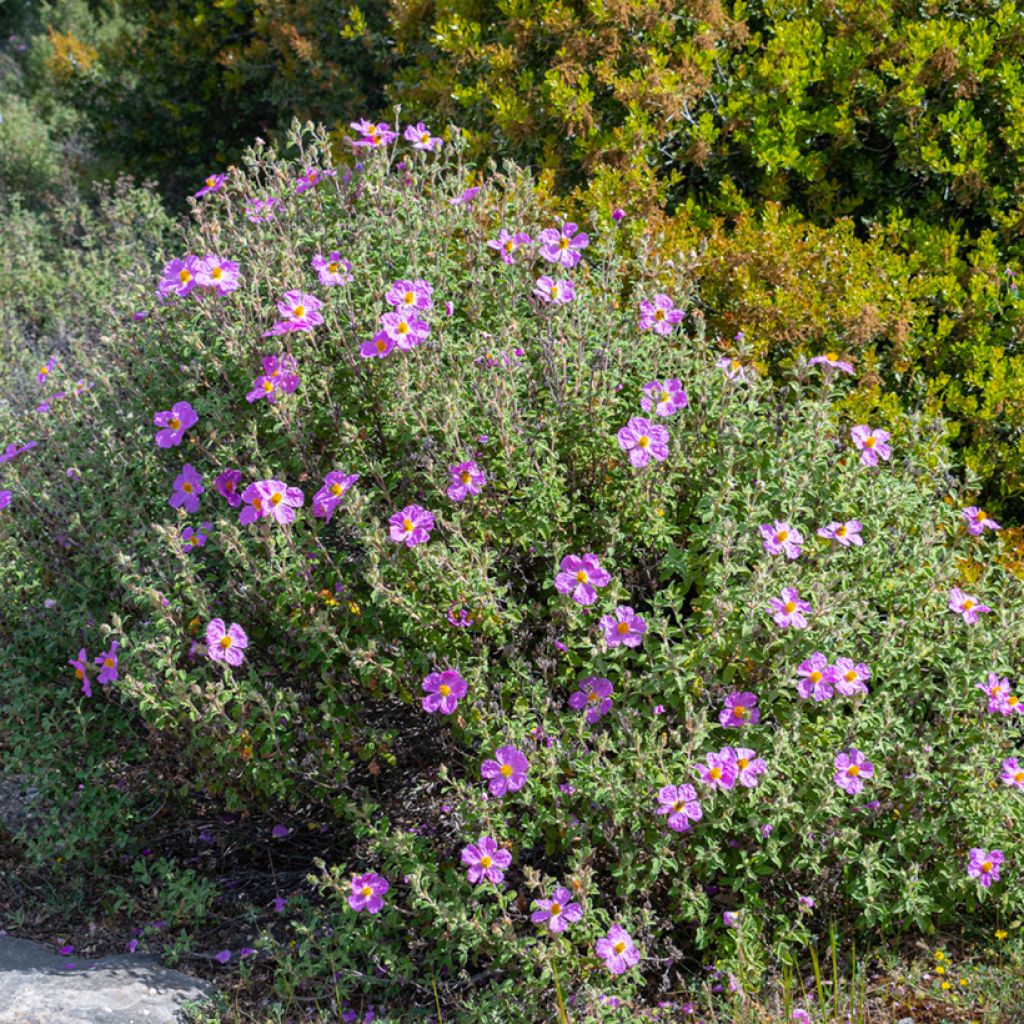

Cistus creticus - Rockrose


Cistus creticus - Rockrose
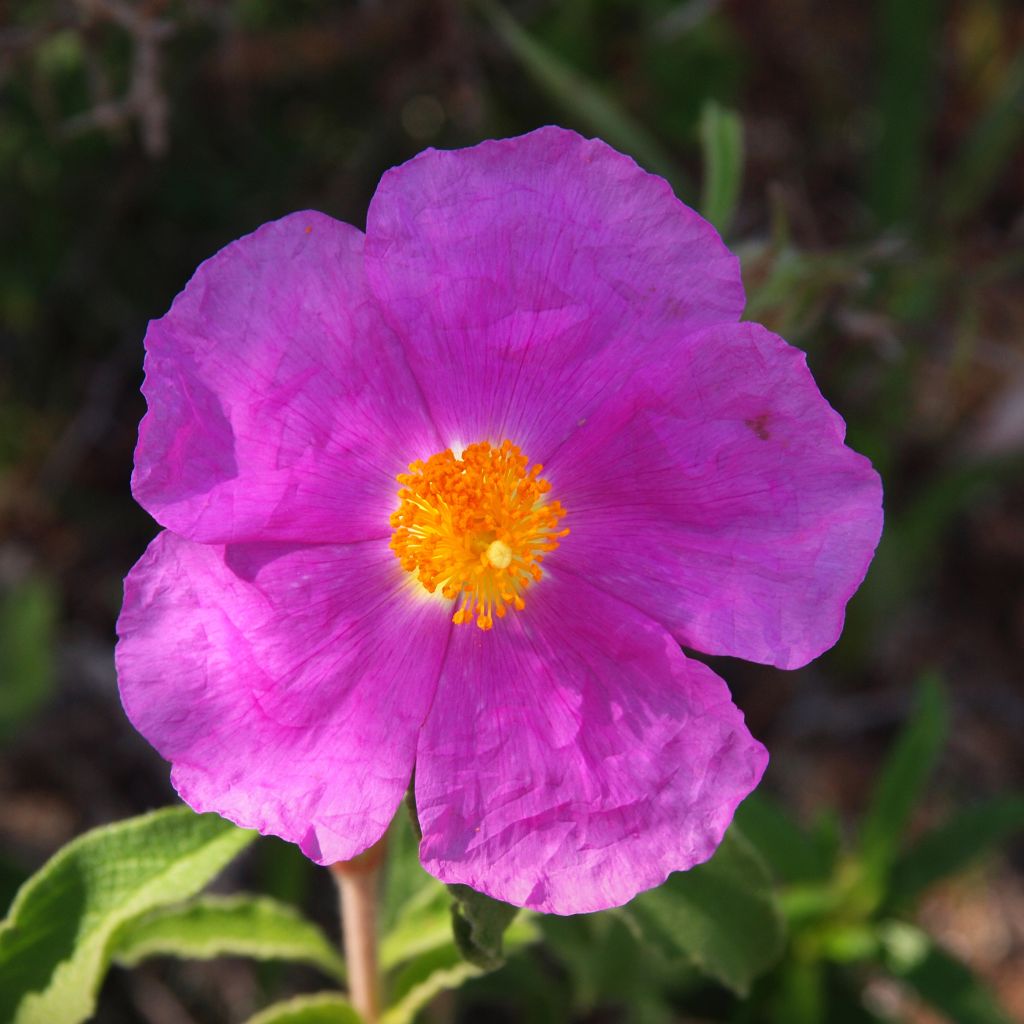

Cistus creticus - Rockrose
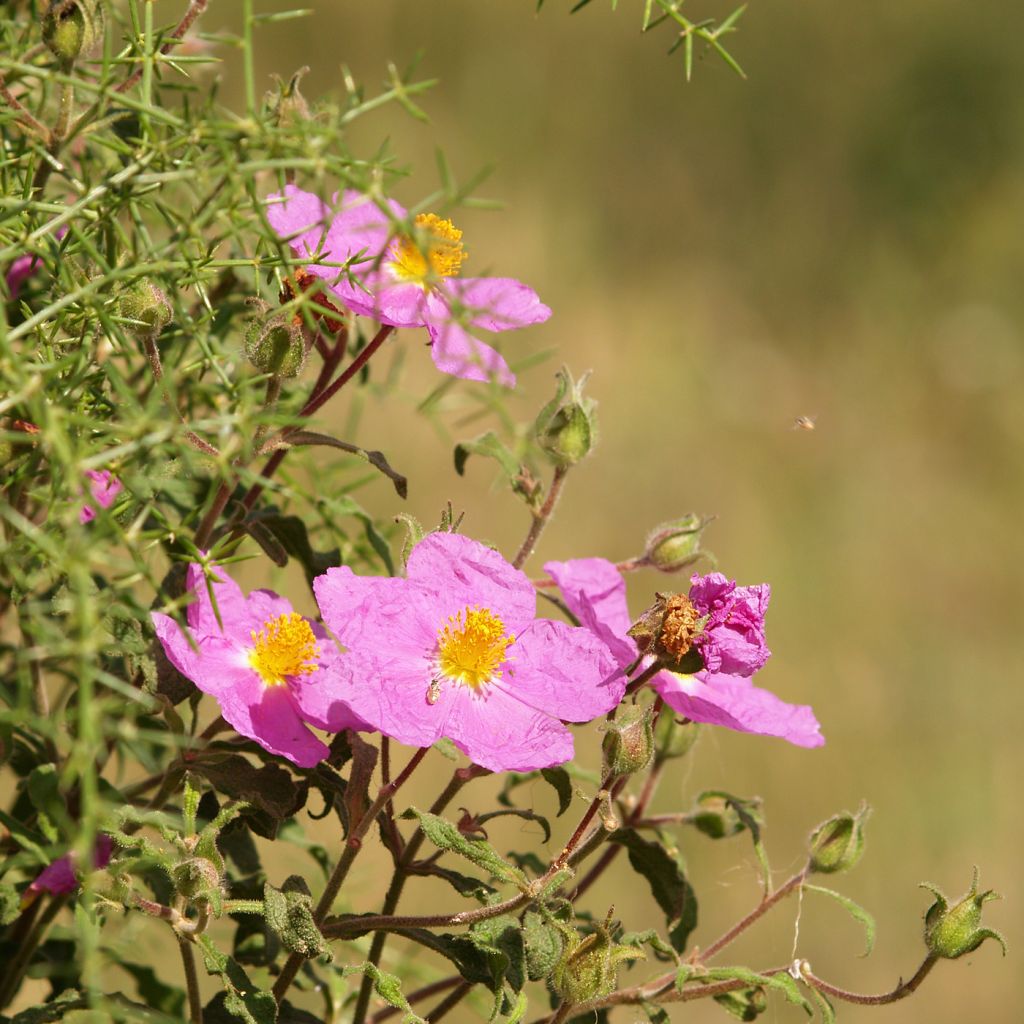

Cistus creticus - Rockrose
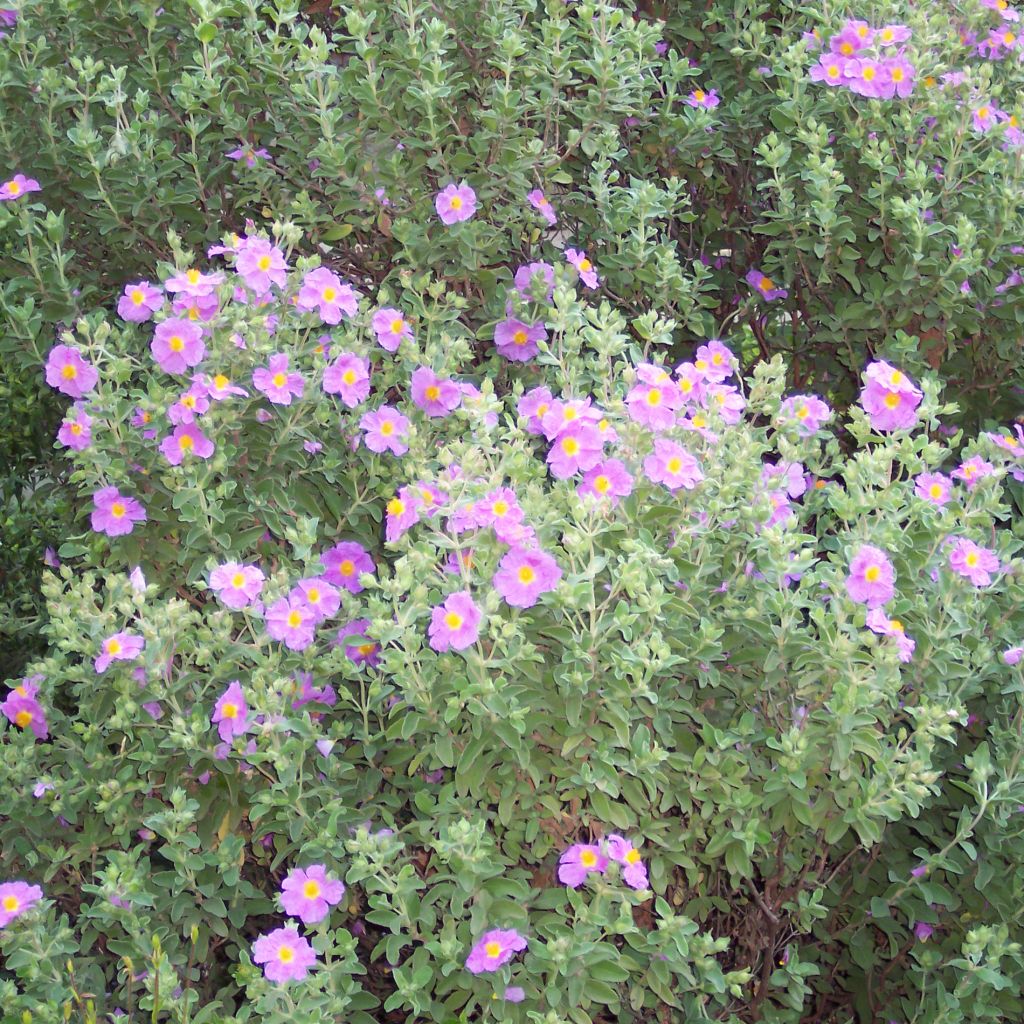

Cistus creticus - Rockrose
Cistus creticus - Rockrose
Cistus creticus
Cretan Rockrose
I bought 3 of them three years ago. Planting in limestone soil, pH 7.8, against a south-facing wall. Shoot very slow in the first year, 5 flowers in the second year, and the third year a splendor. At least 200 flowers in constant renewal. A joy.
jean paul, 26/05/2023
Special offer!
Receive a €20 voucher for any order over €90 (excluding delivery costs, credit notes, and plastic-free options)!
1- Add your favorite plants to your cart.
2- Once you have reached €90, confirm your order (you can even choose the delivery date!).
3- As soon as your order is shipped, you will receive an email containing your voucher code, valid for 3 months (90 days).
Your voucher is unique and can only be used once, for any order with a minimum value of €20, excluding delivery costs.
Can be combined with other current offers, non-divisible and non-refundable.
Why not try an alternative variety in stock?
View all →This plant carries a 24 months recovery warranty
More information
We guarantee the quality of our plants for a full growing cycle, and will replace at our expense any plant that fails to recover under normal climatic and planting conditions.

Would this plant suit my garden?
Set up your Plantfit profile →
Description
Cistus creticus, the Cretan rockrose, is a fairly hardy evergreen Mediterranean shrub. In spring, it is covered with a profusion of ephemeral corollas resembling wild roses, in bright pink crumpled silk. Its fragile, moving flowers only live for one day in spring, but are constantly renewed among the woolly, greenish-grey, slightly aromatic foliage. This plant is perfectly equipped to withstand drought and salty winds, piercing the rocky limestone scrub vegetation or siliceous scrub with its deep roots to draw strength. Give it a dry and poor slope, plenty of sunlight, and lots of heat.
The Cretan rockrose belongs to the Cistaceae family. It is native to Mediterranean islands, mainly Crete. It has a bushy and spreading habit, reaching a height and width of 100cm (39in). Its growth rate is quite slow. The plant ages relatively well and dies after 12 to 15 years. The flowering takes place in spring or early summer depending on the climate, and lasts for about a month. The flowers, with round fully open corollas, 4 to 4.5cm (2in) in diameter, are bright pink and shiny, enhanced by numerous bright yellow stamens in the centre. The petals slightly overlap. They only live for a day, covering the ground with their petals in the late afternoon, but will already be replaced the next morning. The evergreen foliage is composed of thick, wavy, irregularly undulating, pubescent, greyish-green leaves, measuring 3 to 5cm (1 to 2in) long. The young shoots are glandular and aromatic.
This lovely rockery bush and plant for poor soils is perfectly adapted to drought. Create an evergreen bed to accompany your cistus. Evoke memories of scrub vegetation by mixing the foliage and scents of lavender, rosemary, thyme, and sage. Add Californian poppies and dryland euphorbias for some dynamism in your composition. In warm regions, you can plant it in the ground. In cooler climates, it is possible to cultivate it in large pots, paying attention to drainage. Water the containers abundantly but spaced out to let the substrate dry between each watering.
The leaves of aromatic cistus varieties produce labdanum, a sticky resin with medicinal properties, widely used in perfumery.
Report an error about the product description
Cistus creticus - Rockrose in pictures
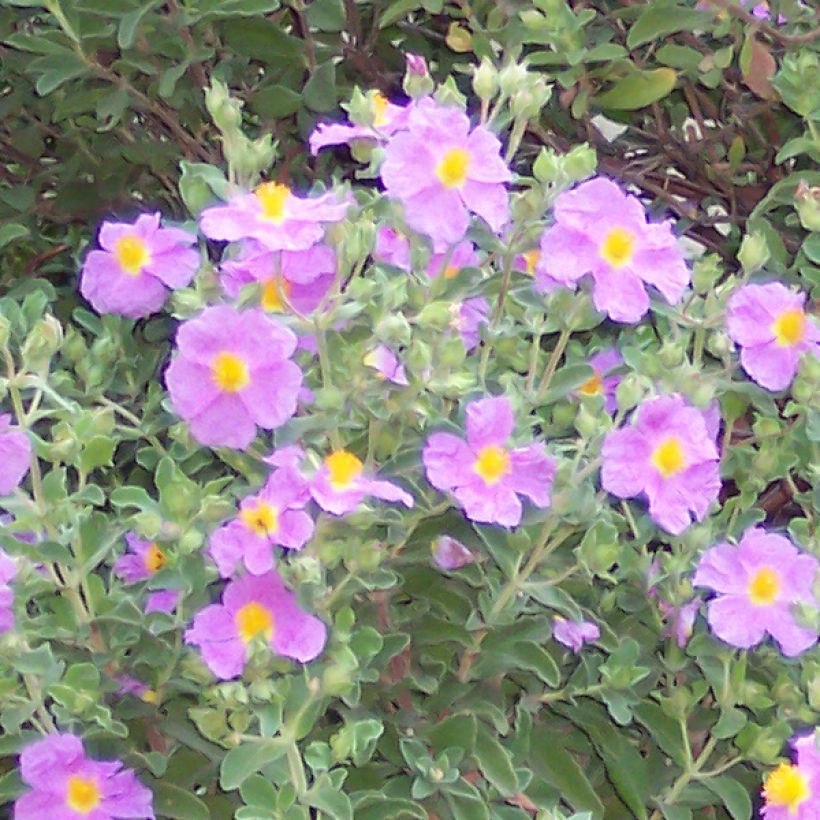

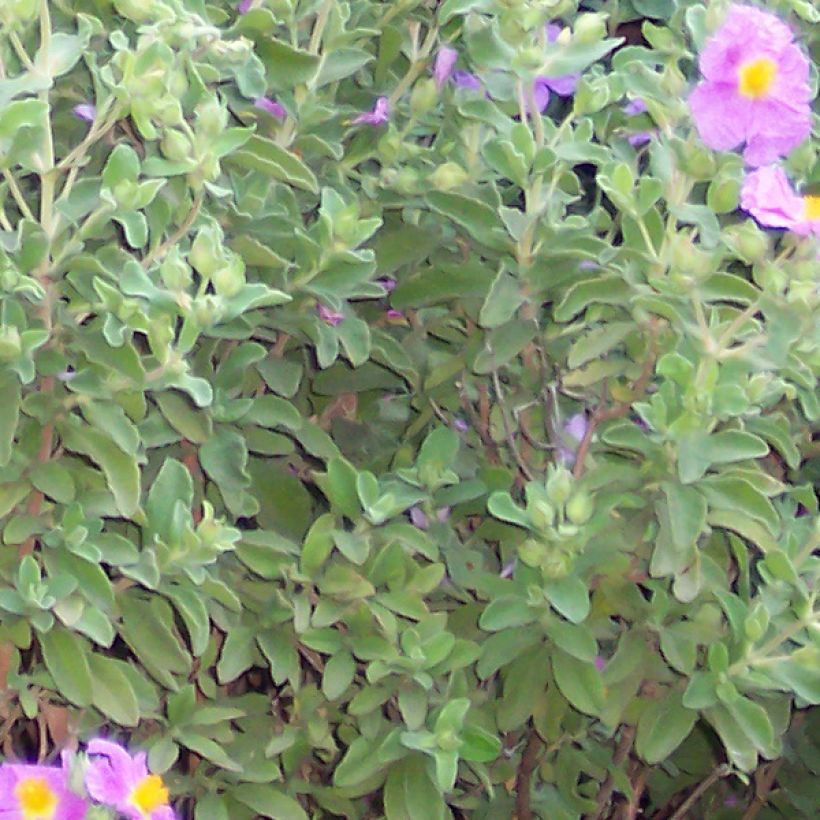

Plant habit
Flowering
Foliage
Botanical data
Cistus
creticus
Cistaceae
Cretan Rockrose
Mediterranean
Other Cistus - Rockrose
View all →Planting and care
Cistus creticus requires perfectly drained, rocky or sandy, poor, even slightly chalky soil. Plant it after the last frost in cold areas, and in September-October in hot and dry climates. It cannot thrive without sunshine and likes to have warm roots. Under these conditions, it is hardy down to -8 or -10°C (17.6 or 14 °F), and will live longer. Mulch it in winter in the coldest regions and isolate it from the cold as much as possible. Place it in the warmest corner of the garden, in full sun against a south-facing wall, in a rocky or sandy slope. Plant in any substrate that does not retain moisture. Excess water in winter will be fatal. However, it can also be damaging in summer during its period of vegetative rest. The combination of heat and humidity leads to the development of a fungus that attacks the plant's collar and will be fatal.
You can prune the stems after flowering to encourage the plant to branch out. Avoid severe pruning.
Planting period
Intended location
Care
-
, onOrder confirmed
Reply from on Promesse de fleurs
Similar products
Haven't found what you were looking for?
Hardiness is the lowest winter temperature a plant can endure without suffering serious damage or even dying. However, hardiness is affected by location (a sheltered area, such as a patio), protection (winter cover) and soil type (hardiness is improved by well-drained soil).

Photo Sharing Terms & Conditions
In order to encourage gardeners to interact and share their experiences, Promesse de fleurs offers various media enabling content to be uploaded onto its Site - in particular via the ‘Photo sharing’ module.
The User agrees to refrain from:
- Posting any content that is illegal, prejudicial, insulting, racist, inciteful to hatred, revisionist, contrary to public decency, that infringes on privacy or on the privacy rights of third parties, in particular the publicity rights of persons and goods, intellectual property rights, or the right to privacy.
- Submitting content on behalf of a third party;
- Impersonate the identity of a third party and/or publish any personal information about a third party;
In general, the User undertakes to refrain from any unethical behaviour.
All Content (in particular text, comments, files, images, photos, videos, creative works, etc.), which may be subject to property or intellectual property rights, image or other private rights, shall remain the property of the User, subject to the limited rights granted by the terms of the licence granted by Promesse de fleurs as stated below. Users are at liberty to publish or not to publish such Content on the Site, notably via the ‘Photo Sharing’ facility, and accept that this Content shall be made public and freely accessible, notably on the Internet.
Users further acknowledge, undertake to have ,and guarantee that they hold all necessary rights and permissions to publish such material on the Site, in particular with regard to the legislation in force pertaining to any privacy, property, intellectual property, image, or contractual rights, or rights of any other nature. By publishing such Content on the Site, Users acknowledge accepting full liability as publishers of the Content within the meaning of the law, and grant Promesse de fleurs, free of charge, an inclusive, worldwide licence for the said Content for the entire duration of its publication, including all reproduction, representation, up/downloading, displaying, performing, transmission, and storage rights.
Users also grant permission for their name to be linked to the Content and accept that this link may not always be made available.
By engaging in posting material, Users consent to their Content becoming automatically accessible on the Internet, in particular on other sites and/or blogs and/or web pages of the Promesse de fleurs site, including in particular social pages and the Promesse de fleurs catalogue.
Users may secure the removal of entrusted content free of charge by issuing a simple request via our contact form.
The flowering period indicated on our website applies to countries and regions located in USDA zone 8 (France, the United Kingdom, Ireland, the Netherlands, etc.)
It will vary according to where you live:
- In zones 9 to 10 (Italy, Spain, Greece, etc.), flowering will occur about 2 to 4 weeks earlier.
- In zones 6 to 7 (Germany, Poland, Slovenia, and lower mountainous regions), flowering will be delayed by 2 to 3 weeks.
- In zone 5 (Central Europe, Scandinavia), blooming will be delayed by 3 to 5 weeks.
In temperate climates, pruning of spring-flowering shrubs (forsythia, spireas, etc.) should be done just after flowering.
Pruning of summer-flowering shrubs (Indian Lilac, Perovskia, etc.) can be done in winter or spring.
In cold regions as well as with frost-sensitive plants, avoid pruning too early when severe frosts may still occur.
The planting period indicated on our website applies to countries and regions located in USDA zone 8 (France, United Kingdom, Ireland, Netherlands).
It will vary according to where you live:
- In Mediterranean zones (Marseille, Madrid, Milan, etc.), autumn and winter are the best planting periods.
- In continental zones (Strasbourg, Munich, Vienna, etc.), delay planting by 2 to 3 weeks in spring and bring it forward by 2 to 4 weeks in autumn.
- In mountainous regions (the Alps, Pyrenees, Carpathians, etc.), it is best to plant in late spring (May-June) or late summer (August-September).
The harvesting period indicated on our website applies to countries and regions in USDA zone 8 (France, England, Ireland, the Netherlands).
In colder areas (Scandinavia, Poland, Austria...) fruit and vegetable harvests are likely to be delayed by 3-4 weeks.
In warmer areas (Italy, Spain, Greece, etc.), harvesting will probably take place earlier, depending on weather conditions.
The sowing periods indicated on our website apply to countries and regions within USDA Zone 8 (France, UK, Ireland, Netherlands).
In colder areas (Scandinavia, Poland, Austria...), delay any outdoor sowing by 3-4 weeks, or sow under glass.
In warmer climes (Italy, Spain, Greece, etc.), bring outdoor sowing forward by a few weeks.






























